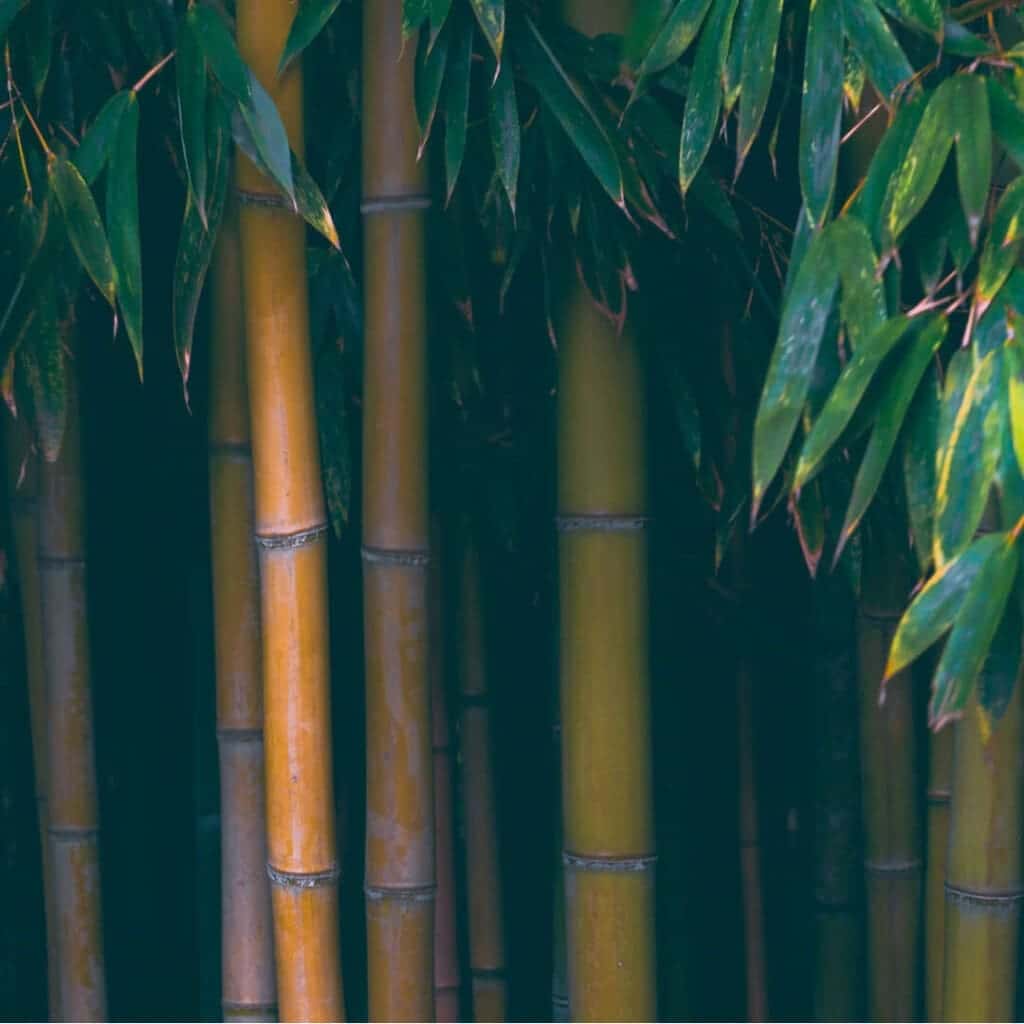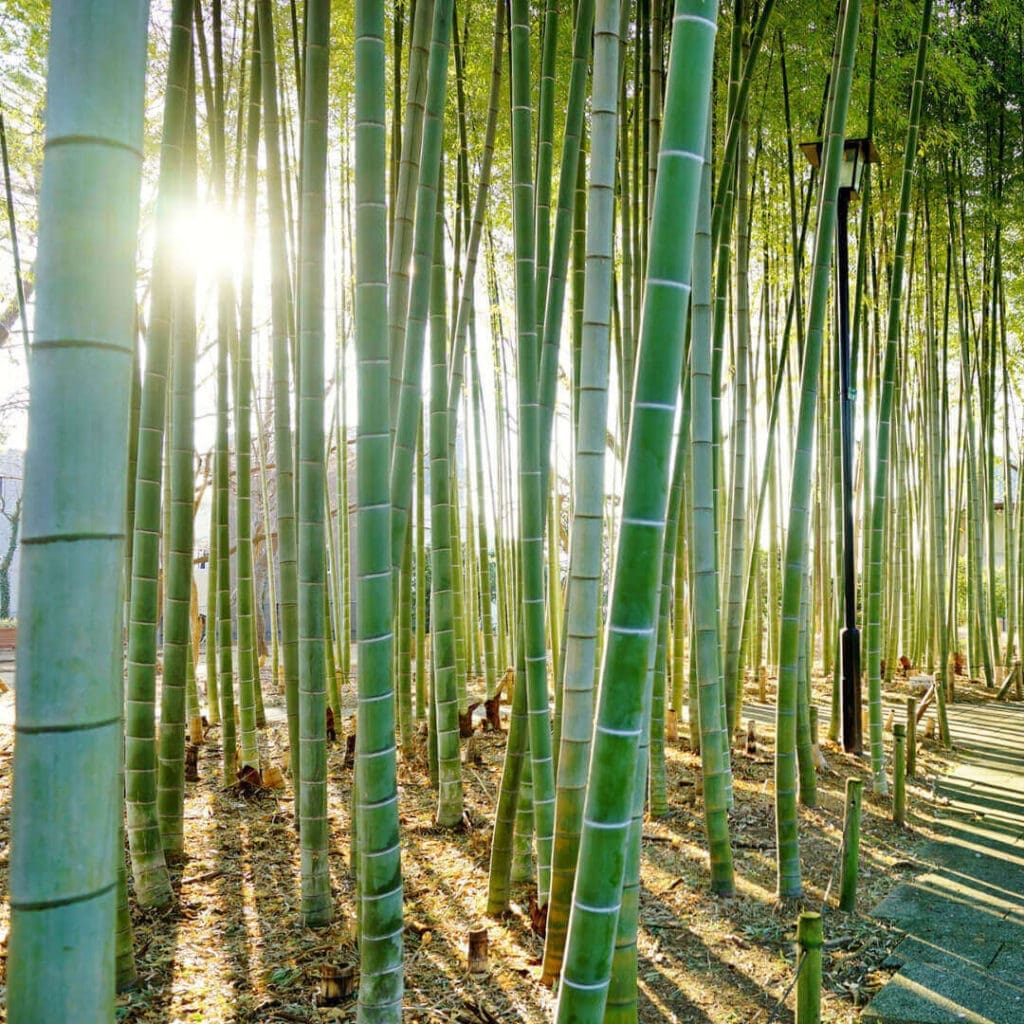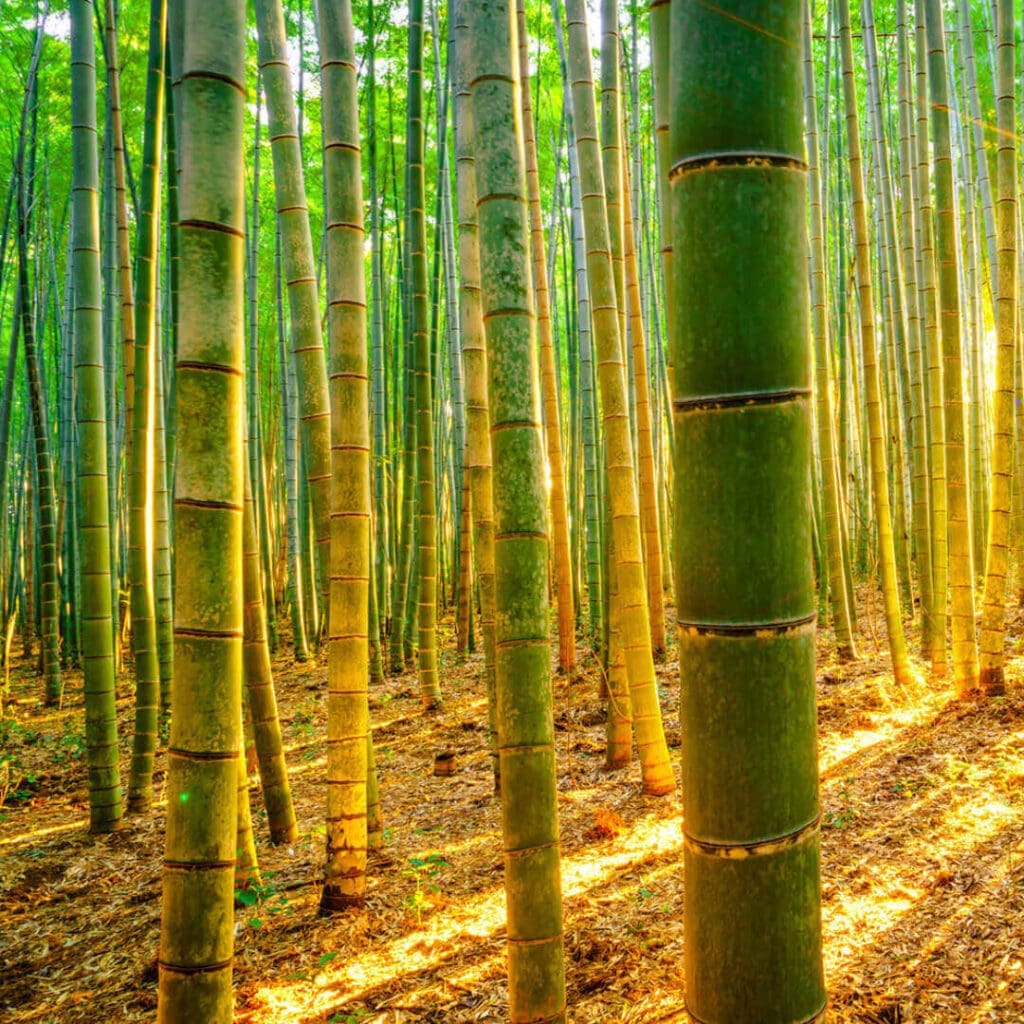The question that many people want to understand is how strong bamboo is. Or why is bamboo so strong when compared to other woods?
Bamboo is one of the strongest and most versatile materials in the world. It has been used in construction, furniture-making, and even as a source of food and medicine for centuries. Bamboo is known for its fast-growing nature, as well as its incredible strength and durability. In this blog post, we will explore the strength of bamboo and compare it to other woods, such as oak, maple, and teak.
Table of Contents
- What Is Bamboo?
- How Strong Is Bamboo?
- Comparing Bamboo’s Janka Strength To Other Hardwoods
- The Advantages Of Using Bamboo In Home Decor and Furniture Products
- What Is The Janka Hardness Test, And What Does It Mean?
- Frequently Ask Questions About Bamboo
- Related Content
What Is Bamboo?
Bamboo is a type of grass that is found all over the world. It is known for its fast-growing nature and can grow up to 91 cm (35 inches) in just one day. There are over 1,400 species of bamboo, each with its unique properties and characteristics.

Bamboo is used for various applications, from construction and furniture-making to paper production and even as a food source in some cultures. In many parts of Asia, bamboo is considered so strong and flexible that it is used as scaffolding for all kinds of construction projects.
How Strong Is Bamboo?
Bamboo is one of the most robust materials in the world. It has a Janka hardness rating of 1,380 pounds-force (lbf), higher than many hardwoods, including oak, ash, and teak.
The Janka hardness rating measures a wood’s resistance to denting and wear. It is determined by measuring the force required to embed a small steel ball halfway into the wood. (For more information, see our details of what a Janka rating is below)
For comparison, oak wood has a Janka hardness rating of 1,290 lbs, maple wood a rating of 1,450 lbs, and teak wood a rating of 1,070lbsf. As you can see, bamboo is stronger than oak and teak and only slightly less strong than maple.
But the strength of bamboo goes beyond just its Janka rating. Bamboo is also incredibly durable and resistant to moisture, insects, and fire damage.
Bamboo’s Tensile Strength Is Stronger Than Many Metals
Bamboo’s tensile strength is one of its most remarkable properties. Tensile strength refers to a material’s ability to resist pulling or stretching forces, known as tension.
This property is essential in construction and engineering, where materials must withstand stress without breaking or deforming.

Bamboo has a tensile strength of 28,000 pounds per square inch (psi), higher than many metals, including steel. This makes it a solid and durable material that can be used in various applications, including construction, furniture-making, and even as a substitute for steel reinforcement in concrete.
Because of its natural tensile strength, bamboo is also used for construction scaffolding in many parts of Asia.
One of the reasons for bamboo’s impressive tensile strength is its unique structure. Bamboo comprises of long, tightly interlocked fibers, creating a strong flexible material that can withstand stress without breaking.
This structure makes bamboo resistant to bending and warping, essential in construction and engineering applications.
Bamboo’s tensile strength is not only impressive on its own, but it is also remarkable when you consider its weight. Bamboo is much lighter than steel, so it can be used in structures without adding unnecessary weight.
This makes it an ideal material for earthquake-resistant buildings and other structures where weight is a concern.
Bamboo’s tensile strength is one of its most impressive properties. Its lightweight and flexible nature makes it an excellent material for construction and engineering applications.
Because of its superb strength, Bamboo is an ideal wood and material for many different applications. Because bamboo is flexible, it is ideal for creating furniture and home decor products.
Comparing Bamboo’s Janka Strength To Other Hardwoods
To better understand how bamboo’s Janka strength compares to other hardwoods, let’s look at a chart comparing their Janka hardness ratings.
Here is a chart comparing the Janka hardness rating and maturation time of various hardwoods, including bamboo, ebony, maple, oak, teak, ironwood, walnut, ash, and rubberwood:
| Wood | Janka Hardness Rating (lbs) | Maturation Time (years) |
|---|---|---|
| Bamboo | 1,380 | 3-5 |
| Ebony | 3,220 | 50-100 |
| Maple | 1,450 | 30-60 |
| Oak | 1,290 | 20-50 |
| Teak | 1,070 | 20-40 |
| Ironwood | 4,000+ | 100+ |
| Brazilian Walnut (Ipe) | 3,684 | 25-30 |
| Ash | 1,320 | 20-40 |
| Rubberwood | 980 | 25-30 |
As you can see from the chart, bamboo has a Janka hardness rating of 1,380 lbs, which is more vital than many hardwoods such as teak and oak.
Bamboo’s Fast Growth Makes It Eco-friendly
Additionally, bamboo is one of the fastest-growing materials, with a maturation time of only 3-5 years. This makes it an excellent eco-friendly option for those who are concerned about the impact of deforestation and logging on the environment.
In comparison, some of the other hardwoods on the chart have much longer maturation times. Ebony, for example, can take up to 100 years to mature, while ironwood can take over 100 years.
This means using these hardwoods is less sustainable and more environmentally damaging than using bamboo or other faster-growing materials.
While many other strong hardwoods are available, the long maturation times of some of these materials make them less sustainable and environmentally friendly. By choosing bamboo and other fast-growing materials, we can help to reduce the impact of logging and deforestation on the environment.

The Advantages Of Using Bamboo In Home Decor and Furniture Products
There are many advantages to using bamboo for home decor and furniture products, and other uses. Here are some of the reasons:
Bamboo Is A Fast Growing Plant
One of the most significant advantages of using bamboo is its fast-growing nature. Bamboo can grow up to 91 cm (35 inches) in just one day, so it can be harvested much more quickly than other types of hardwoods.
This makes it a more sustainable and environmentally-friendly option for those concerned about deforestation and the impact of logging on the environment.
Bamboo Is Strong And Durable
Another advantage of using bamboo is its strength and durability. As mentioned earlier, bamboo has a higher Janka hardness rating than many hardwoods. It is also resistant to moisture, insects, and fire, making it ideal for various applications.
Bamboo Is Lightweight And Flexible
Bamboo is also lightweight and flexible, making it easy to work with and ideal for earthquake-resistant buildings and other structures.
Bamboo is one of the most robust and versatile materials globally. Bamboo’s strength and durability make it an excellent choice for construction and furniture-making, while its fast-growing nature makes it a more sustainable and environmentally-friendly option.
Beyond its strength, bamboo is also incredibly flexible, lightweight, and resistant to moisture, insects, and fire. These properties make it an ideal material for use in various applications, including building construction, flooring, furniture, and even clothing.
As the demand for sustainable and eco-friendly products grows, bamboo will likely become an even more popular material. Its incredible strength and versatility make it easy to see why bamboo has been used for centuries in many different cultures worldwide.
What Is The Janka Hardness Test, And What Does It Mean?
The Janka hardness test measures the resistance of a wood species to wear and denting. It is a commonly used method to determine the hardness and durability of various hardwoods.
The test involves measuring the force required to embed a steel ball with a diameter of 11.28 millimeters (.444 inches) into the wood to a depth of half the ball’s diameter. The test is standardized and performed in a laboratory setting.
The Janka hardness rating is expressed in pounds-force (lbf), indicating the force required to press the steel ball into the wood. The higher the Janka hardness rating, the more resistant the wood is to denting and wear.
The Janka hardness test helps determine the suitability of a particular type of wood for various applications, such as flooring, furniture, and construction. A higher Janka rating indicates that the wood is more complicated and durable, making it suitable for high-traffic areas and heavy use.
On the other hand, woods with lower Janka ratings may not be as durable and require more frequent maintenance.
The Janka hardness test is a method of measuring the hardness and durability of various types of hardwoods. It is an essential factor to consider when choosing a type of wood for various applications, and it can help to ensure that the wood will be durable and long-lasting.
If you are looking for any bamboo or wood products to manufacture in Asia, Mondoro would love to help you.
Find out more about how Mondoro can help you create, develop, and manufacture excellent home decor and furniture products – don’t hesitate to contact me, Anita. Check out my email by clicking here or become a part of our community and join our newsletter by clicking here.
Mondoro gives out a FREE Lookbook to anyone interested. You can receive a copy of our latest Lookbook by clicking here.
Listen to our Podcast called Global Trade Gal. You can find it on all major podcast platforms. Try out listening to one of our podcasts by clicking here.
Subscribe to our Mondoro Company Limited YouTube Channel with great videos and information by clicking here.
Frequently Ask Questions About Bamboo
How strong is bamboo compared to other woods?
Bamboo is more robust than many hardwoods, such as oak and teak, and has a tensile strength of 28,000 psi, higher than many steel alloys. (See our chart above with Janka strength numbers)
Is bamboo stronger than concrete?
No, bamboo is not stronger than concrete. However, it is a lightweight and sustainable alternative to traditional building materials.
What is the weight capacity of bamboo?
The weight capacity of bamboo depends on the thickness and quality of the bamboo. However, some bamboo varieties can support weights of up to 20,000
Can bamboo be used in earth-quake-resistant buildings?
Bamboo is a popular building material in earthquake-prone regions due to its flexibility and strength.
Is bamboo resistant to fire?
Yes, Bamboo is not entirely fire-resistant but has a high ignition point and is less likely to catch fire than many other building materials.
Does bamboo shrink or expand in different temperatures
Bamboo is susceptible to changes in temperature and humidity, which can cause it to shrink or expand slightly.
Can bamboo be used to build boats?
Bamboo is a popular material for boatbuilding due to its strength, durability, and flexibility.
How long does bamboo last?
Bamboo can last for many years if properly treated and maintained. Some varieties of bamboo can last up to 30 years or more.
How does bamboo compare to carbon fiber in terms of strength
Carbon fiber is more vital than bamboo in tensile strength, but bamboo is more flexible and has a higher compressive strength.
Related Content
What Is Stronger Rattan Or Bamboo?
Bamboo is more robust than rattan. Some bamboo is known even to have a higher tensile strength than steel; this is why bamboo is used as scaffolding in construction in many parts of Asia. Rattan is a vine that grows in the jungles; when rattan is manufactured into furniture, it can be solid.
You can learn more by reading our blog, What Is Stronger Rattan Or Bamboo? by clicking here.
How Do You Make A Bamboo Lamp Shade? All About Bamboo Lampshades
To manufacture or make bamboo lampshades, you need to 1) properly prepare the bamboo materials, 2) build a metal frame, 3) wrap the metal frame, 4) secure the bamboo onto the metal frame, 5) spray color on top of the bamboo shade if you desire the lampshade to be a color other than natural and 6) spray a top coat on the entire shade to protect the bamboo shade’s finish.
You can read our blog about How Do You Make A Bamboo Lamp Shade? All About Bamboo Lampshades by clicking here.
Rattan Vs. Bamboo – The Differences Between The Materials Explained
Rattan and bamboo are not the same material, as they have different characteristics and uses. For example, bamboo is hollow and grows straight as a tree would. Rattan is a solid material that is easily bent and grows in rainforests as a vine.
You can learn more by reading our blog, Rattan Vs. Bamboo – The Differences Between the Materials Explained, by clicking here.

